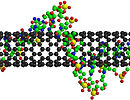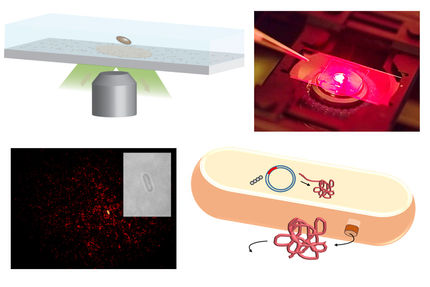Carbon nanotubes that look like asbestos, behave like asbestos
New study shows inhaling long, thin carbon nanotubes may result in asbestos-related disease
A major study published in Nature Nanotechnology suggests some forms of carbon nanotubes - a poster child for the "nanotechnology revolution" - could be as harmful as asbestos if inhaled in sufficient quantities.
The study used established methods to see if specific types of nanotubes have the potential to cause mesothelioma - a cancer of the lung lining that can take 30-40 years to appear following exposure. The results show that long, thin multi-walled carbon nanotubes that look like asbestos fibers, behave like asbestos fibers.
Discovered nearly 20 years ago, carbon nanotubes have been described as the wonder material of the 21st Century. Light as plastic and stronger that steel, they are being developed for use in new drugs, energy-efficient batteries and futuristic electronics. But since their discovery, questions have been raised about whether some of these nanoscale materials may cause harm and undermine a nascent market for all types of carbon nanotubes, including multi- and single-walled carbon nanotubes. Leading forecasting firms say sales of all nanotubes could reach $2 billion annually within the next four to seven years, according to an article in the U.S. publication Chemical & Engineering News.
"This study is exactly the kind of strategic, highly focused research needed to ensure the safe and responsible development of nanotechnology," says Andrew Maynard, Chief Science Advisor to the Project on Emerging Nanotechnologies and a co-author on the paper. "It looks at a specific nanoscale material expected to have widespread commercial applications and asks specific questions about a specific health hazard. Even though scientists have been raising concerns about the safety of long, thin carbon nanotubes for over a decade, none of the research needs in the current U.S. federal nanotechnology environment, health and safety risk research strategy address this question."
Researchers, led by Professor Kenneth Donaldson at the University of Edinburgh in the United Kingdom, examined the potential for long and short carbon nanotubes, long and short asbestos fibers, and carbon black to cause pathological responses known to be precursors of mesothelioma. Material was injected into the abdominal cavity of mice - a sensitive predictor of long fiber response in the lung lining.
"The results were clear," says Donaldson. "Long, thin carbon nanotubes showed the same effects as long, thin asbestos fibers." Donaldson stresses there are still pieces of the puzzle to fill in. "We still don't know whether carbon nanotubes will become airborne and be inhaled, or whether, if they do reach the lungs, they can work their way to the sensitive outer lining. But if they do get there in sufficient quantity, there is a chance that some people will develop cancer-perhaps decades after breathing the stuff," states Donaldson.
There is a silver lining to this research. According to Donaldson, "Short or curly carbon nanotubes did not behave like asbestos, and by knowing the possible dangers of long, thin carbon nanotubes, we can work to control them. It's a good news story, not a bad one. It shows that carbon nanotubes and their products could be made to be safe."
But Donaldson added that the present study only tested for fiber-like behavior and did not exonerate carbon nanotubes from damaging the lungs in other ways. "More research is still needed if we are to understand how to use these materials as safely as possible," he notes.
Most read news
Organizations

Get the analytics and lab tech industry in your inbox
By submitting this form you agree that LUMITOS AG will send you the newsletter(s) selected above by email. Your data will not be passed on to third parties. Your data will be stored and processed in accordance with our data protection regulations. LUMITOS may contact you by email for the purpose of advertising or market and opinion surveys. You can revoke your consent at any time without giving reasons to LUMITOS AG, Ernst-Augustin-Str. 2, 12489 Berlin, Germany or by e-mail at revoke@lumitos.com with effect for the future. In addition, each email contains a link to unsubscribe from the corresponding newsletter.
























































